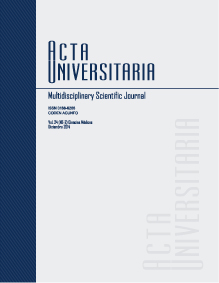Personality traits in school adolescents from conflictive environment
Published 2015-01-12
Keywords
- Adolescentes,
- MMPI-A,
- rasgos de personalidad,
- entorno conflictivo.
- MMPI-A,
- personality traits,
- conflictive environments.
How to Cite
Abstract
Adolescence, the transition period between childhood and maturity, has physical and psychological changes taking place for the acquisition of new roles in society. Several epidemiological phenomena affect this transition. No systematic research studies have been done in Mexico to characterize adolescent personality traits. Early identification of traits is important to identify potential psychological substrates for social risk behaviors. This work characterizes personality traits in adolescents at conflictive environments. A prospective, exploratory, cross-sectional study was conducted by applying the MMPI-A, BETA-III and a demographic questionnaire in a single group session to teenage high school students n = 24; 45.8% women y 54.2% men; x = 15 ± 0.5 years. Hypochondriasis (Hs) and Hysteria (Hi) showed high T-scores in more than 50% of participants; low T-scores were predominant in content scales. Scales with high scores are linked to transgression, post-traumatic stress disorder (PTSD) and eating disorders; while not conclusive they may represent the substrate for conflictive social interactions.

